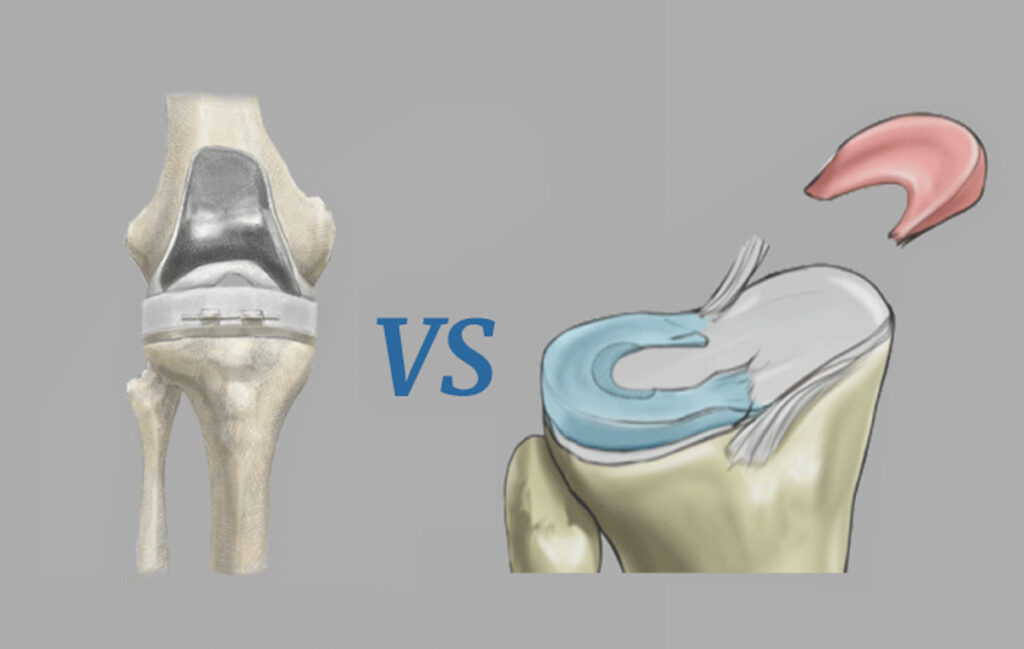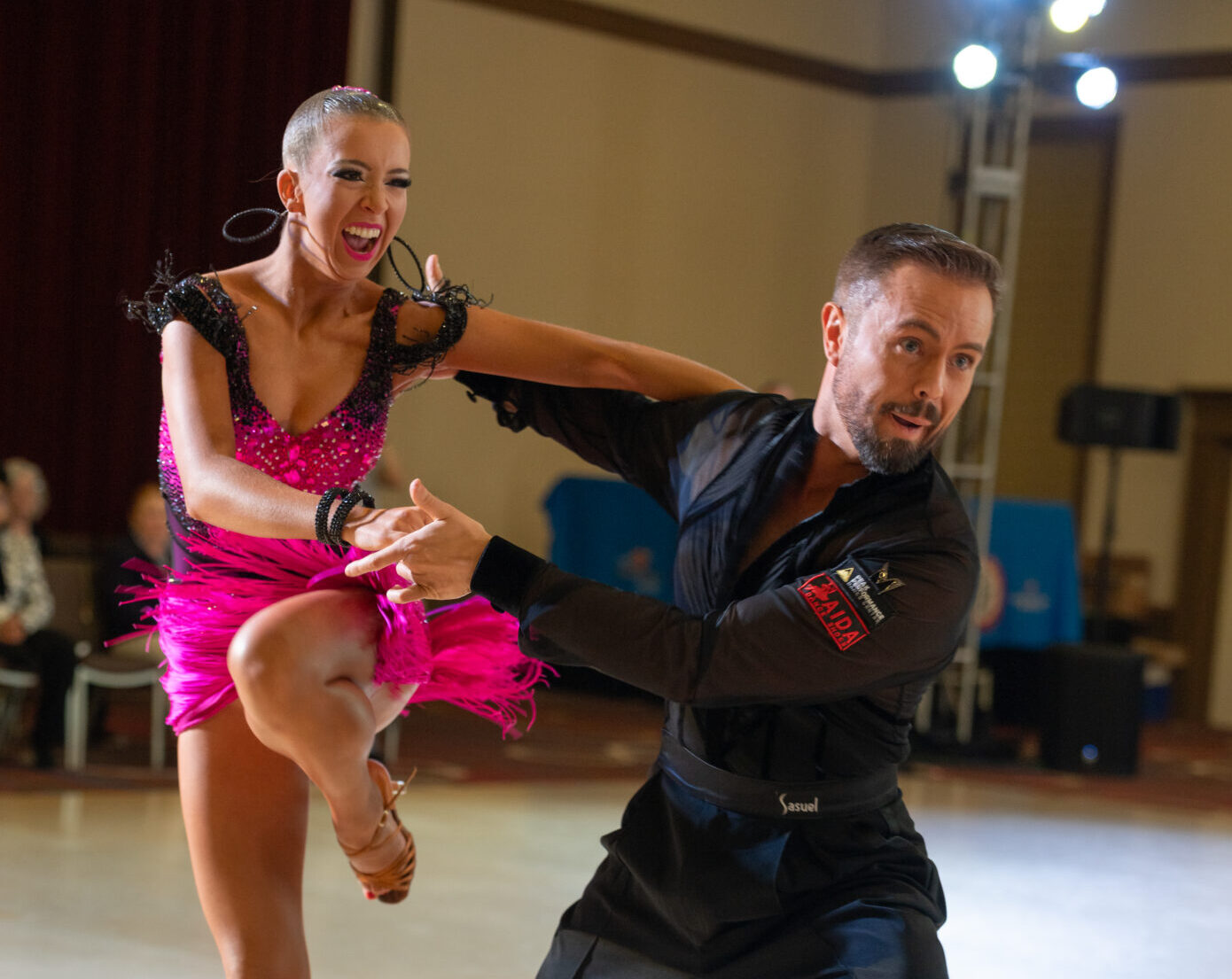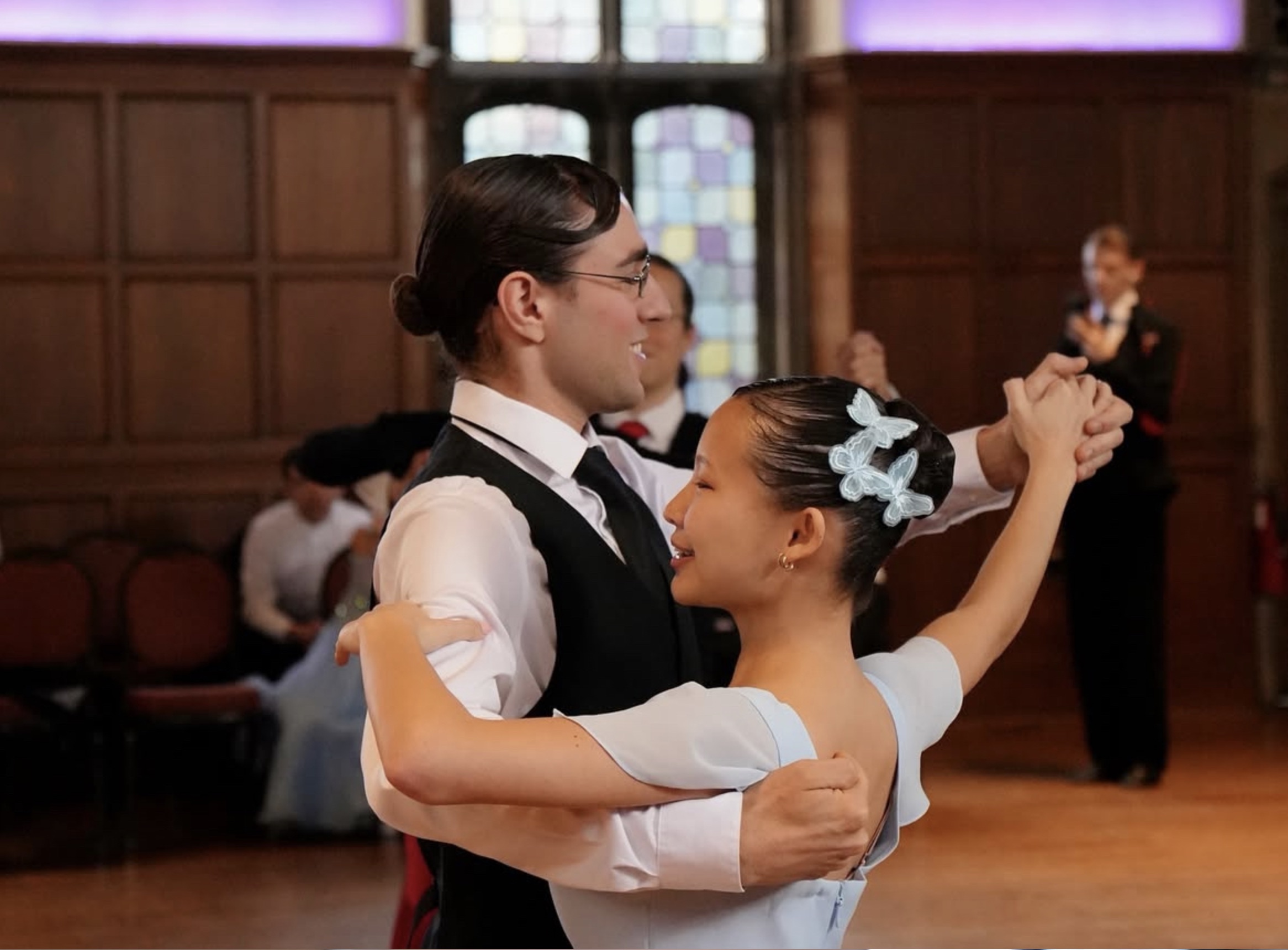Patients with knee arthritis have choices: resurface the knee with metal and plastic or biologically restore the missing tissue. Here is a common conversation I have each day:
“Doc, my knee hurts. I injured it years ago, now I have some arthritis, I have tried all the injections and physical therapy but now it is getting in the way of my life. What to do?”
The story most commonly begins with a history… and that history often begins with a years-old injury leading to surgery during which the meniscus tissue—the key shock absorber for the knee—was at least partially removed, or the patient was told to just live with it. Since people take 2-3 million steps each year with normal walking, the loss of the effectiveness of the meniscus leads to a wearing away of the articular cartilage bearing surface, creating a bone-on-bone situation in the knee.
Sometimes there is no history of injury, but the patient tells me that “my parents had arthritis and knee replacements and I knew I would, too.” And of course, there are other variations, such as chronically torn ligaments or angulated knees that lead to knee pain.
The decision on which approach to use to fix the knee depends on a few key factors. First, the exam. If the patient has a stable knee, a reasonably good range of motion, and is not too bowed or knock-kneed, and lubrication plus anabolic injections have failed, a biological knee replacement is considered. In this case, the meniscus cartilage is replaced with a donor meniscus, and the articular cartilage is regrown with a paste graft or other technique. If the knee is unstable, a ligament reconstruction must be considered as well.
An X-ray is the next key step. If the X-ray shows that there is still joint space remaining, there is space for a new meniscus. If it is bone-on-bone, however, a bionic or artificial implant is usually required.
The analysis is then augmented by an MRI. The MRI serves to define the status of all the tissues in the knee—and if only one part needs treatment. If the X-ray reveals bone-on-bone in one compartment, the MRI determines if the other areas of the knee are healthy. When only one area is severely damaged a bionic or partial knee replacement is often possible.
Partial knee replacements have improved dramatically since the introduction of the MAKO robot in 2006. Computer modeling permits us to specifically resurface either the medial, lateral, or patellofemoral joint, leaving the rest of the knee alone. Partial knee replacements feel normal after 3 to 4 months, and patients often can return to full sports. If the other parts of the knee eventually wear a partial replacement for those areas can be added to the first procedure.
Biologic replacement has likewise improved. This year, we published our data on patients over 50 years old, referred for partial or total knee replacements, who chose a biologic replacement. Over 40% of patients delayed their need for a partial replacement for 8 years and the other patients never came to a partial or total knee replacement in the course of a 2-25 year outcome study.
Patients with arthritis present with widely varying pain levels and equally wide sports goals for after treatment. Our job is to pick the right procedure for them. Their job is to treat themselves the way a pro athlete does and use their injury as an opportunity to come back fitter, faster, and stronger than they have been in years with the goal of dropping dead at age 100 playing the sport they love.
 Kevin R. Stone, MD
Kevin R. Stone, MD
Dr. Kevin R. Stone is a pioneer of advanced orthopaedic surgical and rehabilitation techniques to repair, regenerate, and replace damaged cartilage and ligaments.
He is an orthopaedic surgeon at The Stone Clinic and also the chairman of the Stone Research Foundation. He lectures around the world as an expert in cartilage and meniscal growth, replacement, and repair and holds over 40 U.S. patents on novel inventions to improve healthcare.
Dr. Stone uses anabolic therapy and other biologic techniques to work to preserve the natural biology of a joint, helping people avoid or delay an artificial joint replacement.
At The Robotic Joint Center, Dr. Stone uses advanced robotic-assisted surgery techniques to ensure that partial and total knee replacements result in precise alignment and a more natural feeling knee
Dr. Stone was trained at Harvard University in internal medicine and orthopaedic surgery and at Stanford University in general surgery. His fellowship was in research at the Hospital for Special Surgery and in knee surgery in Lake Tahoe. Dr. Stone is consistently listed as one of the country’s top 25 Ambulatory Surgery Center (ASC) leaders and ranks amongst the country’s top 75 knee surgeons.
Editor’s Note: Read about one of our National Champions’ experiences with a knee replacement by Dr. Stone at the Stone Clinic. Senior III Smooth and Standard Dancer Mike Lynch talks about his injury, research, procedure, therapy, and progress. Mike also provides a checklist to help you if you travel for surgery.1
Dr. Stone is a physician for Smuin Ballet and has served as a physician for the U.S. Ski Team, the U.S. Pro Ski Tour, the Honda Ski Tour, the Jeep 48 Straight Tour, the Old Blues Rugby Club, Lawrence Pech Dance Company, Marin Ballet, the modern pentathlon at the U.S. Olympic Festival, the United States Olympic Training Center, and for the World Pro Ski Tour. He’s been featured on Good Morning America, the Ologies podcast, and Star Talk podcast hosted by Neal deGrasse Tyson. He is the best-selling author of the book Play Forever. He also served as a columnist for the San Francisco Examiner and writes a weekly blog at www.stoneclinic.com/blog.
Dr. Stone enjoys skiing, windsurfing, and biking.
This article was reprinted with the express permission of Dr. Kevin Stone, MD and The Stone Clinic. To see or sign up for The Stone Clinic’s Blog, Click Here!






















